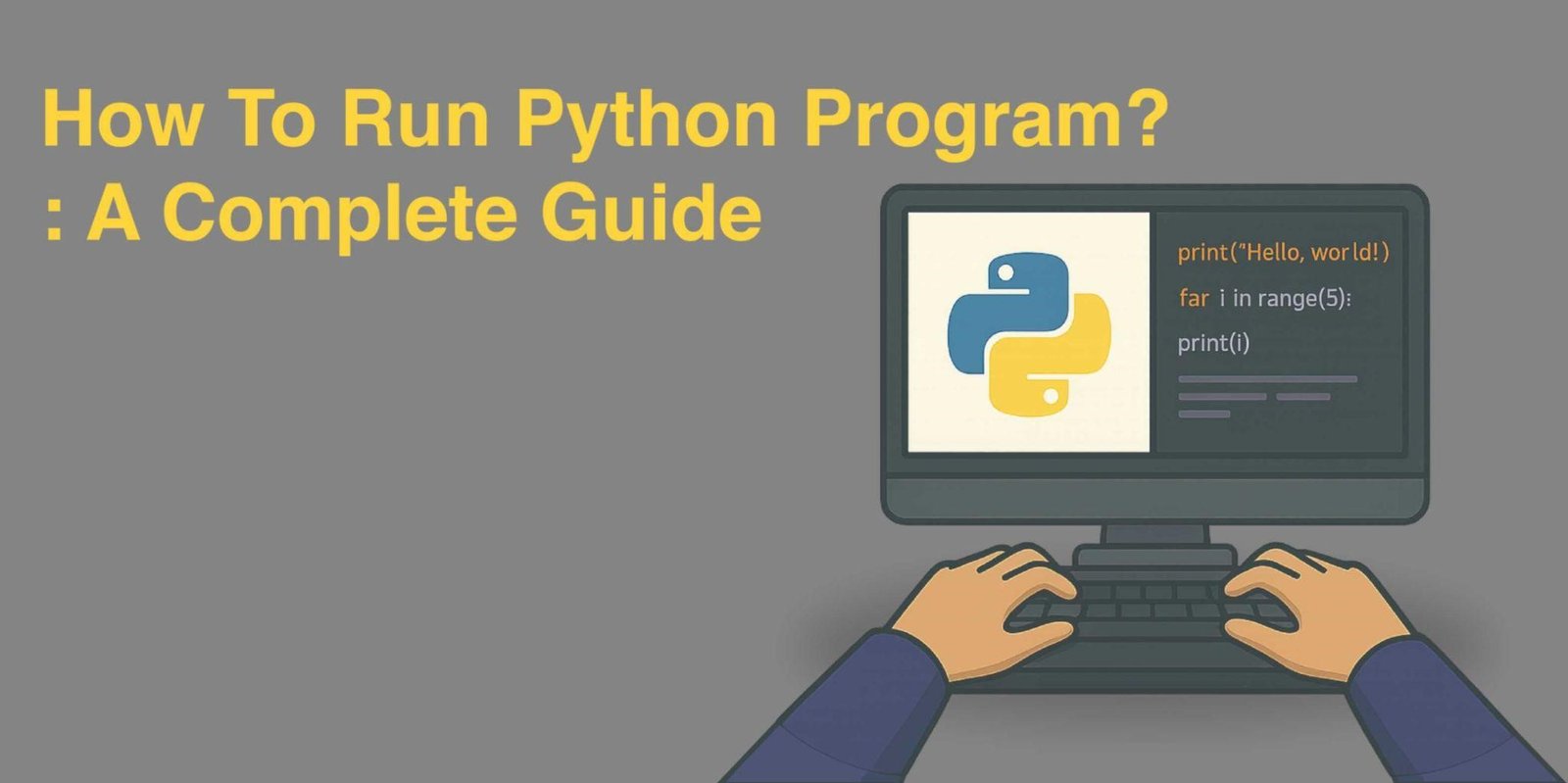How to Run a Python Program: A Complete Guide

Python is one of the most widely used programming languages today due to its simplicity, versatility, and powerful libraries. Whether you're a beginner learning the basics or a professional automating tasks, understanding how to execute Python scripts is fundamental. This guide provides a complete overview of how to run a Python program across different platforms and environments.
Prerequisites for Running Python Programs
Before running Python code, ensure Python is installed on your system. You can download the latest version from the official Python website (https://www.python.org/). During installation, make sure to check the option to "Add Python to PATH," which allows you to run Python in the command line or terminal directly.
To verify installation:
Open Command Prompt (Windows) or Terminal (Mac/Linux)
Type python --version or python3 --version
If Python is installed correctly, the system will return the version number.
Method 1: Command Line/Terminal Execution
One simplest and most common way to execute Python scripts is through the command line.
Windows:
1. Open Command Prompt.
2. Navigate to the folder where your Python file is located using cd.
3. Run the script by typing: python filename.py
Mac/Linux:
1. Open Terminal.
2. Use cd to navigate to your script’s directory.
3. Run the script using: python3 filename.py
This approach is essential for understanding how to run Python in the command line, and it's widely used in automation, scripting, and batch processing tasks. For a more in-depth exploration of Python's capabilities in automation and data analysis, consider checking out Bhrighu's Data Science essentials program, which teaches advanced Python techniques for real-world applications.
Method 2: Using Integrated Development Environments (IDEs)
IDEs are software tools that provide a user-friendly interface to write, debug, and run code.
Popular IDEs for running Python codes include:PyCharm (JetBrains)
VS Code (Microsoft)
IDLE (bundled with Python)
Jupyter Notebook
Running code in an IDE:
1. Open your IDE and create or open a Python script.
2. Most IDEs have a built-in Run button or terminal.
3. Click Run or press the designated shortcut (e.g., Shift + F10 in PyCharm).
IDEs simplify Python program execution by providing features like syntax highlighting, code completion, and debugging tools. They're ideal for beginners and professionals alike.
Method 3: Online Python Environments
For those without access to a local Python setup or for quick testing, online platforms offer a fast solution.
Popular online Python environments:
Replit (https://replit.com)
Google Colab (https://colab.research.google.com)
PythonAnywhere (https://www.pythonanywhere.com)
Steps to run Python code online:
1. Visit one of the platforms.
2. Sign up or log in if necessary.
3. Paste your Python code or upload a script.
4. Click the Run button to execute.
These platforms are beneficial for beginners learning how to run Python code without needing to install any software. Want to take your Python skills to the next level with professional certification? Explore Bhrighu's Certificate in Python program to master industry-relevant Python programming techniques.
Method 4: Creating Standalone Executables
Sometimes, you may want to share your Python application with users who don’t have Python installed. You can convert your script into a standalone executable.
Tools to create executables:
PyInstaller
cx_Freeze
auto-py-to-exe (a GUI for PyInstaller)
Creating an executable with PyInstaller:
Install PyInstaller via pip: pip install pyinstaller
Navigate to your script's folder.
Run: pyinstaller --onefile filename.py
The executable will be created in the "dist" folder.
This is an excellent method for distributing desktop applications or utilities, especially in environments where Python isn’t pre-installed.
How to Run a Python Script on Mac
Running Python code on a Mac involves using the Terminal, which comes pre-installed on all macOS systems.
Steps:Open Terminal from Applications > Utilities.
Navigate to the script’s folder: cd /path/to/script
Execute the script using: python3 filename.py
macOS typically comes with Python 2.x pre-installed, so using python3 ensures you’re running your code with the latest version. You can also use IDEs like PyCharm or VS Code for a graphical interface.
Troubleshooting Common Execution Issues
Ensure Python is added to PATH during installation.
On Unix-based systems, you may need to change file permissions using: chmod +x filename.py
Python is sensitive to indentation. Ensure consistent use of spaces or tabs.
Install missing packages using pip: pip install package_name
If both Python 2 and 3 are installed, use python3 instead of python
Conclusion
Running Python code is a fundamental skill for any programmer. Whether you're executing Python scripts through the command line, using an IDE, or leveraging online platforms, multiple options are available to suit your needs. This flexibility is one of Python's strengths.
Understanding the different ways to run Python code ensures smoother development and testing. As you continue your programming journey, mastering Python program execution across platforms will help you build more robust and portable applications.
Want to dive deeper into Python? Looking to apply your Python skills to real-world problems? The Industry Readiness Program offers comprehensive training in Python programming with hands-on projects that prepare you for industry challenges in AI, data science, and more.
Frequently Asked Questions
How to run .py file in Windows?
To run a .py file on Windows, open Command Prompt, navigate to the script's folder using cd, and type python filename.py. Ensure Python is installed and added to the system PATH so the command executes the script without errors.
How do I run a function in py?
To run a function in a Python file, ensure it’s defined and then called within the script. For example:
def greet():
print("Hello!")
greet()
Save and run the script using your preferred method (command line, IDE, or online).
What is run() in Python?
run() isn't a built-in Python command but often refers to functions like run() in modules such as subprocess or asyncio, or the method used in threads. It’s typically used to execute tasks or subprocesses within a script programmatically.





